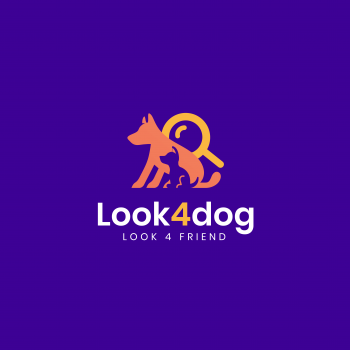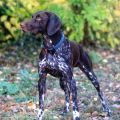Estonian Hound - the breed description to be published
The Estonian Hound, also known as the Eesti Hound, is a versatile and intelligent breed that hails from Estonia. These dogs are known for their exceptional hunting skills and friendly nature. With a unique character and distinct traits, the Estonian Hound makes for a wonderful companion and working dog.
In terms of character, Estonian Hounds are known to be friendly, loyal, and highly energetic. They have a strong desire to please their owners and are always eager to learn and work. This breed is highly adaptable and can easily adjust to various living conditions, making them suitable for both urban and rural environments.
Estonian Hounds are renowned for their exceptional hunting abilities. They possess a keen sense of smell and are excellent trackers, making them ideal for hunting small game such as rabbits and foxes. Their determination and perseverance in the field are remarkable, and they are known to be relentless in their pursuit of prey.
When it comes to behavior, Estonian Hounds are generally well-mannered and sociable. They get along well with children and other pets, making them a great choice for families. However, it is important to note that they have a strong prey drive, so caution should be exercised around smaller animals.
To raise and train an Estonian Hound, it is crucial to provide them with ample mental and physical stimulation. These dogs thrive on regular exercise and require a lot of physical activity to stay happy and healthy. Long walks, jogs, and play sessions in a secure area are essential to meet their exercise needs.
Training an Estonian Hound requires a patient and consistent approach. They are intelligent dogs that respond well to positive reinforcement techniques such as treats, praise, and play. Early socialization is crucial to ensure they grow up to be well-rounded and confident dogs. Exposing them to various environments, people, and other animals from a young age will help prevent any potential behavioral issues.
Estonian Hounds are known to be independent thinkers, which can sometimes make training a bit challenging. They may test boundaries and try to assert their dominance, so it is important to establish yourself as the pack leader early on. Consistency, firmness, and positive reinforcement will go a long way in training these dogs effectively.
It is worth noting that Estonian Hounds have a strong sense of smell and can easily get distracted by scents. Therefore, it is important to keep them on a leash or in a secure area when outside to prevent them from wandering off.
In conclusion, the Estonian Hound is a remarkable breed with a friendly and energetic character. They excel in hunting and make excellent companions for active individuals or families. With proper training, socialization, and exercise, these dogs can thrive in various environments and bring joy to their owners' lives.
The Estonian Hound is a versatile and energetic breed that requires proper care to ensure their overall well-being. Here are some tips on how to care for Estonian Hound dogs, including what to do and what not to do:
1. Exercise: Estonian Hounds are active and athletic dogs that require regular exercise to stay healthy and happy. Aim for at least 60-90 minutes of exercise per day, which can include brisk walks, jogging, or engaging in activities like agility training or scent work. However, avoid excessive exercise in puppies to prevent joint and bone problems.
2. Mental Stimulation: These dogs are intelligent and thrive on mental stimulation. Provide them with puzzle toys, interactive games, and obedience training sessions to keep their minds sharp. Mental stimulation is equally important as physical exercise to prevent boredom and destructive behavior.
3. Grooming: Estonian Hounds have a short and dense coat that requires minimal grooming. Brush their coat once a week to remove loose hair and keep it clean. Regularly check their ears for any signs of infection and clean them as needed. Trim their nails regularly and brush their teeth to maintain good oral hygiene.
4. Socialization: Early and proper socialization is crucial for Estonian Hound puppies. Expose them to various people, animals, and environments to help them develop into well-rounded and confident dogs. Enroll them in puppy classes or obedience training to enhance their social skills and obedience.
5. Diet: Provide a balanced and nutritious diet to meet the specific needs of Estonian Hounds. Consult with a veterinarian to determine the appropriate amount and type of food based on their age, weight, and activity level. Avoid overfeeding to prevent obesity, which can lead to various health issues.
6. Health Care: Regular veterinary check-ups are essential to ensure the overall health of your Estonian Hound. Vaccinations, parasite prevention, and dental care should be a part of their routine healthcare. Additionally, be aware of breed-specific health concerns such as hip dysplasia and eye problems, and discuss preventive measures with your vet.
7. Positive Reinforcement: Estonian Hounds respond well to positive reinforcement training methods. Use rewards, praise, and treats to motivate and encourage good behavior. Avoid harsh training techniques or punishment, as it can lead to fear or aggression in these sensitive dogs.
8. Safety: Ensure a safe environment for your Estonian Hound by securing your yard with a sturdy fence. These dogs have a strong prey drive, so always keep them on a leash or in a securely fenced area during walks. Provide them with a comfortable and safe space indoors, away from extreme temperatures.
What not to do:
1. Neglect exercise: Lack of exercise can lead to behavioral problems and obesity in Estonian Hounds. Avoid confining them indoors for extended periods without adequate physical activity.
2. Leave them alone for long periods: Estonian Hounds are social dogs and can become anxious or develop separation anxiety if left alone for long periods. If you have to be away, provide them with mental stimulation toys or consider doggy daycare or a pet sitter.
3. Use punishment-based training: Harsh training methods can damage the trust and bond between you and your Estonian Hound. Avoid physical punishment, yelling, or any form of negative reinforcement.
4. Overfeed or feed inappropriate food: Overfeeding can lead to obesity, which can strain their joints and overall health. Avoid feeding them table scraps, as some human foods can be toxic to dogs.
5. Skip regular veterinary check-ups: Regular vet visits are crucial to catch any health issues early on. Neglecting routine check-ups can lead to undetected health problems.
By following these care tips and avoiding common mistakes, you can provide your Estonian Hound with a happy, healthy, and fulfilling life.
The Estonian Hound, also known as the Eesti Hagijas, is a medium-sized breed of dog that originates from Estonia. These dogs are known for their distinctive appearance, which includes a unique and eye-catching coat color.
The common color of Estonian Hound dogs is a rich and vibrant tri-color pattern. The base color of their coat is typically a warm and deep reddish-brown, which forms the majority of their body. This reddish-brown hue is often described as chestnut or mahogany, and it gives the Estonian Hound a regal and elegant appearance.
Accentuating the reddish-brown base color are patches of black and white. The black patches are usually found on the back, ears, and tail of the dog. These patches create a striking contrast against the reddish-brown, adding depth and definition to their overall appearance. The black patches can vary in size and shape, ranging from small spots to larger areas that cover a significant portion of the dog's body.
In addition to the black patches, the Estonian Hound also features white markings. These white markings are typically found on the chest, paws, and sometimes on the face. The white patches provide a beautiful contrast against the reddish-brown and black, creating a visually appealing tri-color combination.
The distribution and intensity of the colors can vary from one Estonian Hound to another. Some dogs may have more black patches, while others may have more white markings. This natural variation adds to the uniqueness and individuality of each dog within the breed.
The coat of the Estonian Hound is short and dense, providing protection and insulation in various weather conditions. This coat texture allows the colors to stand out and be easily visible, enhancing the overall beauty of the breed.
The tri-color coat of the Estonian Hound not only adds to their aesthetic appeal but also serves a practical purpose. The distinct color pattern helps hunters identify and track these dogs during hunting expeditions, as they blend well with the natural surroundings of the Estonian forests.
In conclusion, the common color of Estonian Hound dogs is a stunning tri-color combination of reddish-brown, black, and white. This unique coat color, with its rich and vibrant hues, adds to the breed's allure and distinguishes them from other dog breeds. Whether in the field or as a beloved family pet, the Estonian Hound's coat color is sure to captivate and impress all who encounter them.
The Estonian Hound, also known as the Eesti Hagijas, is a medium-sized breed of dog that originated in Estonia. Known for their exceptional hunting skills and strong work ethic, these dogs are generally healthy and robust. However, like any other breed, they are prone to certain health issues that owners should be aware of. In this text, we will explore the most common diseases found in Estonian Hound dogs and discuss how to care for their overall health.
One of the most prevalent health concerns in Estonian Hounds is hip dysplasia. This genetic condition affects the hip joint, causing instability and eventually leading to arthritis. Symptoms may include lameness, difficulty in rising or climbing stairs, and a decreased range of motion. Regular exercise, a balanced diet, and maintaining a healthy weight can help reduce the risk of hip dysplasia. Additionally, responsible breeders perform hip evaluations on their breeding dogs to minimize the occurrence of this condition.
Another common health issue in Estonian Hounds is ear infections. Due to their droopy ears and active outdoor lifestyle, these dogs are more prone to developing ear infections caused by bacteria, yeast, or parasites. Regular ear cleaning with a veterinarian-recommended solution and routine inspection for any signs of redness, swelling, or discharge can help prevent and detect ear infections early on. It is important to avoid using cotton swabs or other sharp objects in the ear canal, as this can cause injury.
Estonian Hounds are generally a healthy breed, but they may also be susceptible to certain eye conditions. Progressive retinal atrophy (PRA) is a genetic disorder that causes the degeneration of the retina, leading to vision loss and eventual blindness. Regular eye examinations by a veterinary ophthalmologist can help detect PRA early on, allowing for appropriate management and care.
Maintaining good dental hygiene is crucial for the overall health of Estonian Hounds. Dental diseases, such as periodontal disease and tooth decay, can lead to pain, infection, and even systemic health issues. Regular brushing of the dog's teeth, providing dental chews or toys, and scheduling professional dental cleanings when necessary can help prevent dental problems.
To ensure the overall well-being of Estonian Hound dogs, it is essential to provide them with a balanced diet that meets their nutritional needs. High-quality dog food, appropriate for their age and activity level, should be chosen. Regular exercise is also crucial to keep them physically fit and mentally stimulated. Daily walks, playtime, and engaging activities such as scent work or obedience training can help maintain their health and prevent obesity.
Regular veterinary check-ups are vital for early detection of any potential health issues. Vaccinations, parasite prevention, and routine blood tests can help ensure the overall health and longevity of Estonian Hound dogs. Additionally, providing a safe and comfortable environment, regular grooming, and plenty of love and attention are essential for their well-being.
In conclusion, while Estonian Hound dogs are generally healthy and robust, they may be prone to certain health issues such as hip dysplasia, ear infections, eye conditions, and dental diseases. By being proactive in their care, including regular veterinary check-ups, proper nutrition, exercise, and maintaining good hygiene practices, owners can help ensure the health and happiness of their Estonian Hound companions.
The Estonian Hound is a medium-sized breed known for its agility, endurance, and hunting skills. To ensure the overall health and well-being of these dogs, it is crucial to provide them with a balanced and nutritious diet. Proper nutrition plays a vital role in maintaining their energy levels, supporting their immune system, and promoting healthy growth and development.
When it comes to feeding an Estonian Hound, it is important to consider their age, weight, activity level, and any specific dietary requirements or allergies they may have. Here are some guidelines to help you provide the best nutrition for your Estonian Hound:
1. High-Quality Dog Food: Choose a premium-quality dog food that is specifically formulated for medium-sized, active breeds. Look for a brand that uses real meat as the primary ingredient and avoids fillers, artificial additives, and by-products. Consult with your veterinarian to determine the appropriate amount of food based on your dog's age, weight, and activity level.
2. Balanced Diet: A balanced diet for an Estonian Hound should consist of a proper ratio of protein, carbohydrates, and healthy fats. Protein is essential for muscle development and repair, so ensure that the dog food you choose contains a sufficient amount of high-quality animal protein. Carbohydrates provide energy, while healthy fats support skin and coat health.
3. Fresh Water: Always provide your Estonian Hound with fresh, clean water. Hydration is crucial for their overall health and helps maintain proper digestion and organ function.
4. Portion Control: Avoid overfeeding your Estonian Hound, as this breed is prone to weight gain. Obesity can lead to various health issues, including joint problems and decreased lifespan. Follow the feeding guidelines provided by the dog food manufacturer and monitor your dog's body condition regularly. Adjust the portion sizes as needed to maintain a healthy weight.
5. Regular Feeding Schedule: Establish a consistent feeding schedule for your Estonian Hound. Divide their daily food intake into two or three meals to prevent bloating and aid digestion. Avoid feeding them immediately before or after intense exercise.
6. Healthy Treats: Treats can be a great way to reward and train your Estonian Hound, but choose them wisely. Opt for healthy, low-calorie treats that are specifically made for dogs. Avoid giving them table scraps, as some human foods can be toxic to dogs.
7. Foods to Avoid: Certain foods can be harmful or toxic to dogs and should be avoided. These include chocolate, caffeine, grapes, raisins, onions, garlic, avocados, alcohol, and artificial sweeteners (such as xylitol). Additionally, bones, especially cooked ones, can splinter and cause choking or internal injuries.
8. Regular Vet Check-ups: Regular veterinary check-ups are essential to monitor your Estonian Hound's overall health and nutritional needs. Your vet can provide specific dietary recommendations based on your dog's individual requirements.
Remember, every dog is unique, and their nutritional needs may vary. It is always recommended to consult with a veterinarian who can provide personalized advice based on your Estonian Hound's specific needs and health conditions. By providing a balanced and nutritious diet, you can help ensure a long, healthy, and active life for your beloved Estonian Hound.





